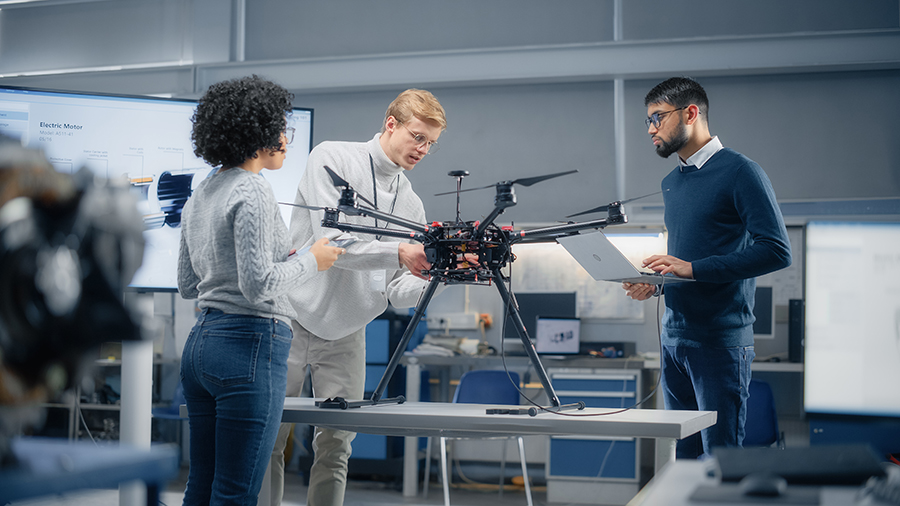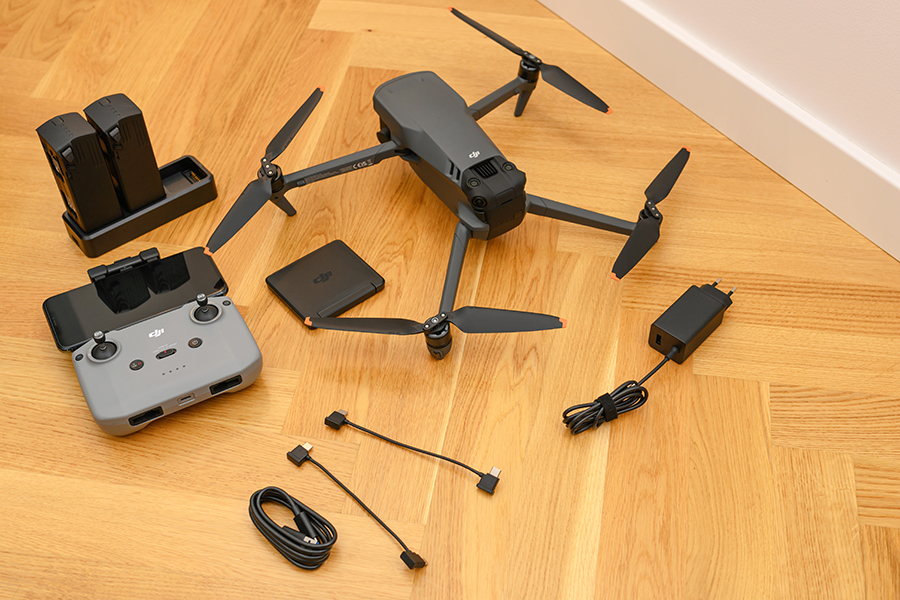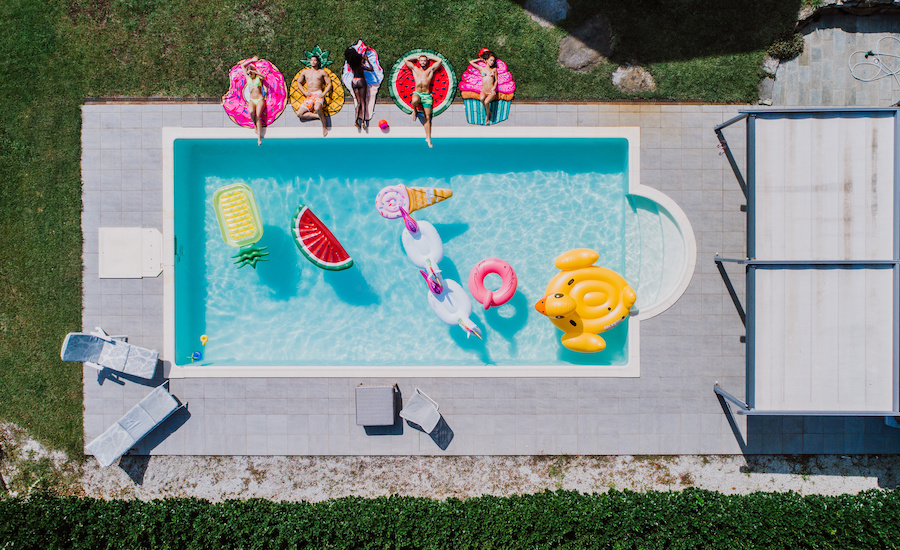The past few years have demonstrated just how quickly drone technology is developing and how it has become an increasingly more common part of the modern world. Aside from being fun toys or powerful photography tools, there are now companies and entire industries that are founded on drone technology.
This begs the question – is knowledge of drones going to be essential ten or twenty years in the future? In that case, do today’s students benefit from early education about drones? We argue that there are lessons that can be taught better with the use of drones.
Hand-Eye Coordination
Much like playing a sport, flying a drone can help train the fine motor skills of young students. More specifically, flying a drone improves hand-eye coordination, reaction time, spatial awareness, and decision-making.
The great thing about drones is they are quite easy to learn to fly, even for young students. They can grasp basic flight maneuvers quickly without feeling intimidated or overwhelmed. Skills can then be advanced through the use of simple indoor obstacle courses. An element of competition can even be introduced through timed races or obstacle challenges.
This does not mean flying a drone can replace playing a sport – they are two completely different but complementary ways to learn motor skills. However, today’s trends seem to indicate that learning how to fly a drone may seem beneficial in the coming years.
Physics
A lot of us have memories of teachers demonstrating concepts in physics in fun ways – a balloon for static electricity, pendulums for conservation of energy, or a glass of water for surface tension among many others. These lessons are memorable because they demonstrate seemingly mundane concepts in interesting and engaging ways.
A flying drone demonstrates many physical concepts – gravity, lift, Newton’s laws of motion, and angular velocity, just to name a few. A class can even delve into more advanced concepts such as how accelerometers and gyroscopes work.
There is a lot to explore just within the concept of lift that can be demonstrated with drones. Questions such as the effect of air pressure, air temperature, and elevation can be excellent thought exercises that will also tackle the fundamentals of physics.
Basic Coding
Some drones can be programmed to follow basic instructions autonomously. A prime example of this is the Ryze Tello, a fairly inexpensive drone that provides a basic platform for young students to learn about coding. This could be a good way to introduce coding to students in a way that is fun and produces real-world demonstrations.

The Tello can be used to make simple projects such as autonomous flight, face or object tracking, or controls via hand and body gestures. For beginners, Tello can be programmed using block programming. However, more advanced users can also program the Tello using Python.
Using drones to teach coding is like hitting two birds with one stone – not only do students learn how to code, but also how a drone works. Along the way, students also develop problem-solving skills. It is this combination of critical thinking, adaptation, and familiarity with technology that can be invaluable for young learners.
Basic Aviation
Learning about drone flight is an excellent gateway to learning about basic aviation concepts. This is a topic that is not typically covered in schools, so there should be some benefit to having students learn even just the fundamentals.
When students become comfortable with drone flight, they can then be given lessons on relevant drone rules. This can be extended to concepts such as flight safety standards, airspace classifications, and air traffic communication among several others. These lessons can then be associated with general air travel to make them easier to relate to for students.
Electronics
Despite their seemingly complex nature, drones are fairly rudimentary electronic devices that you can put together yourself. There are entire communities out there that focus on DIY drones or drones that can be assembled and customized using a range of spare parts.
Drones can be used as educational tools for basic lessons on electronics. The motors can provide a good lesson on the difference between brushed and brushless motors, and the value of micro-stepping versus full-step operation for stepper signals. The Electronic Speed Controller (ESC) of a drone is also an excellent demonstration of feedback systems.
Teaching students about the basics of electronics and having them apply their learnings to assemble their own drones is worth several weeks of instruction and is a good way to apply concepts to practice.
Map Reading
Drones are also an excellent tool to teach students the basics of map reading. Aerial images taken with drones can be used to make rudimentary maps of places that students are familiar with, such as the school grounds or the surrounding neighborhoods. These maps can then be used to develop basic navigation and map reading skills.
These lessons can then be extended to more advanced concepts such as different coordinate systems and map projects, how to read topography maps, and how maps are generated. This topic may seem dry, but being able to read maps properly is a fairly important life skill.
Photography and Videography

Students who are interested in photography and filmmaking will surely get excited at the prospect of flying drones in class. While the photography techniques are nothing new, having a camera mounted on something so mobile and maneuverable as a drone is a completely different experience.
Drones offer photography and filmmaking opportunities that you just would not have on the ground. With drones, photographers can hone their skills in taking shots of cityscapes, natural sceneries, large bodies of water, or sunsets, all from a unique perspective and with a much wider field of view. There are also tons of opportunities for commercial drone photography, so this can set up students for a fruitful career in the future.
Drones are Fun!
By far, the biggest advantage of integrating drones in the classroom is the fact that they are incredibly fun. Drones still maintain the novelty of being new and unfamiliar technology for most people, so they tend to draw attention instantly. This is true both inside and outside the classroom.
There are lots of ways to be creative with the use of drones as a tool for instruction. The great thing about drones today is they come in a wide range of prices and levels of sophistication. For young students, toy drones that are relatively safer and designed for indoor flights are ideal. Drones that are compatible with coding platforms can then be assigned to older students who are interested in the basics of coding.
On the opposite end of the spectrum are the prosumer drones that come with high-end cameras and autonomous flight capabilities. In any case, drones provide a high level of interaction and engagement, boosting the learning experience with a “learning by doing” strategy.
Final Thoughts
Drone technology is pretty much here to stay and will continue to be part of the modern world. It is then up to us to think of ways of harnessing this technology, not just to earn money but also to improve lives.
Using drones as education tools is a no-brainer – these are sophisticated pieces of technology that are easy to pick up and can play an important role in future industries. They are interactive, instantly engaging, and offer opportunities for multidisciplinary lessons.



